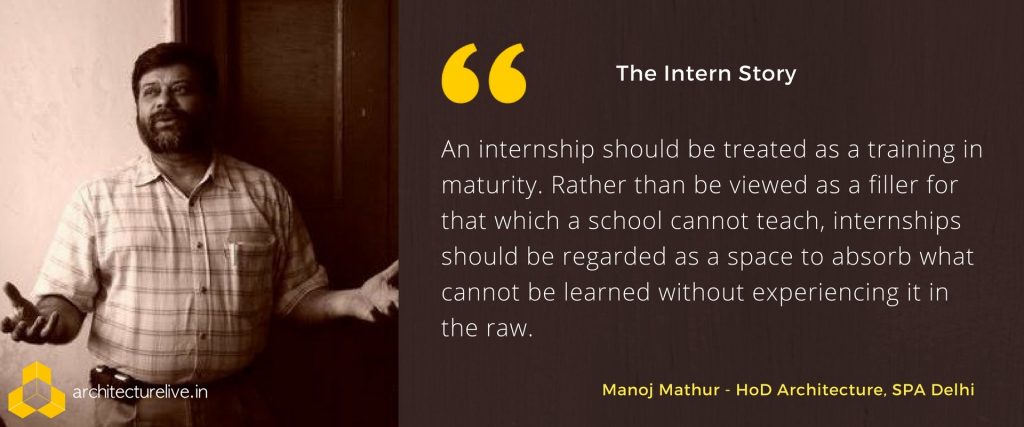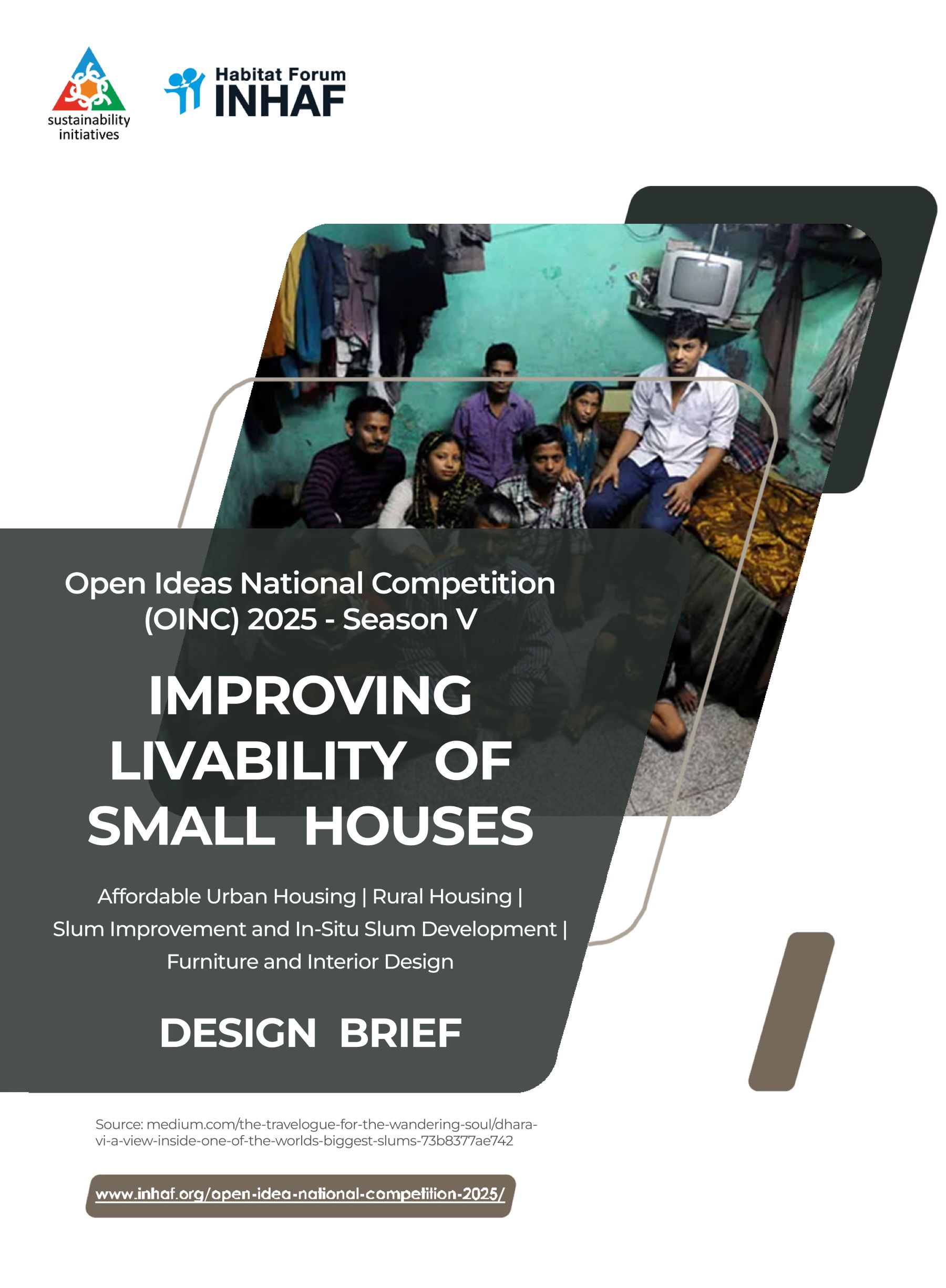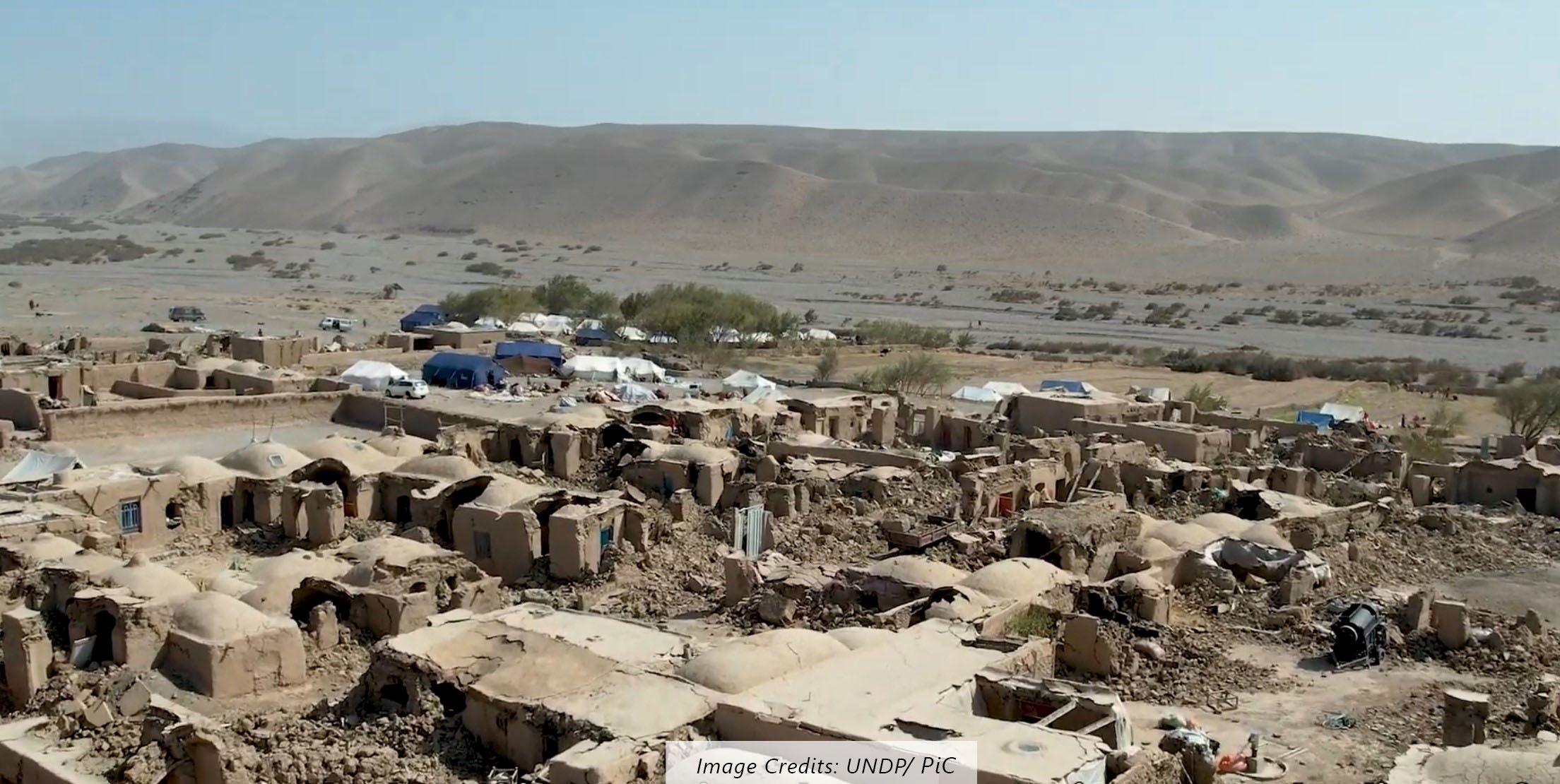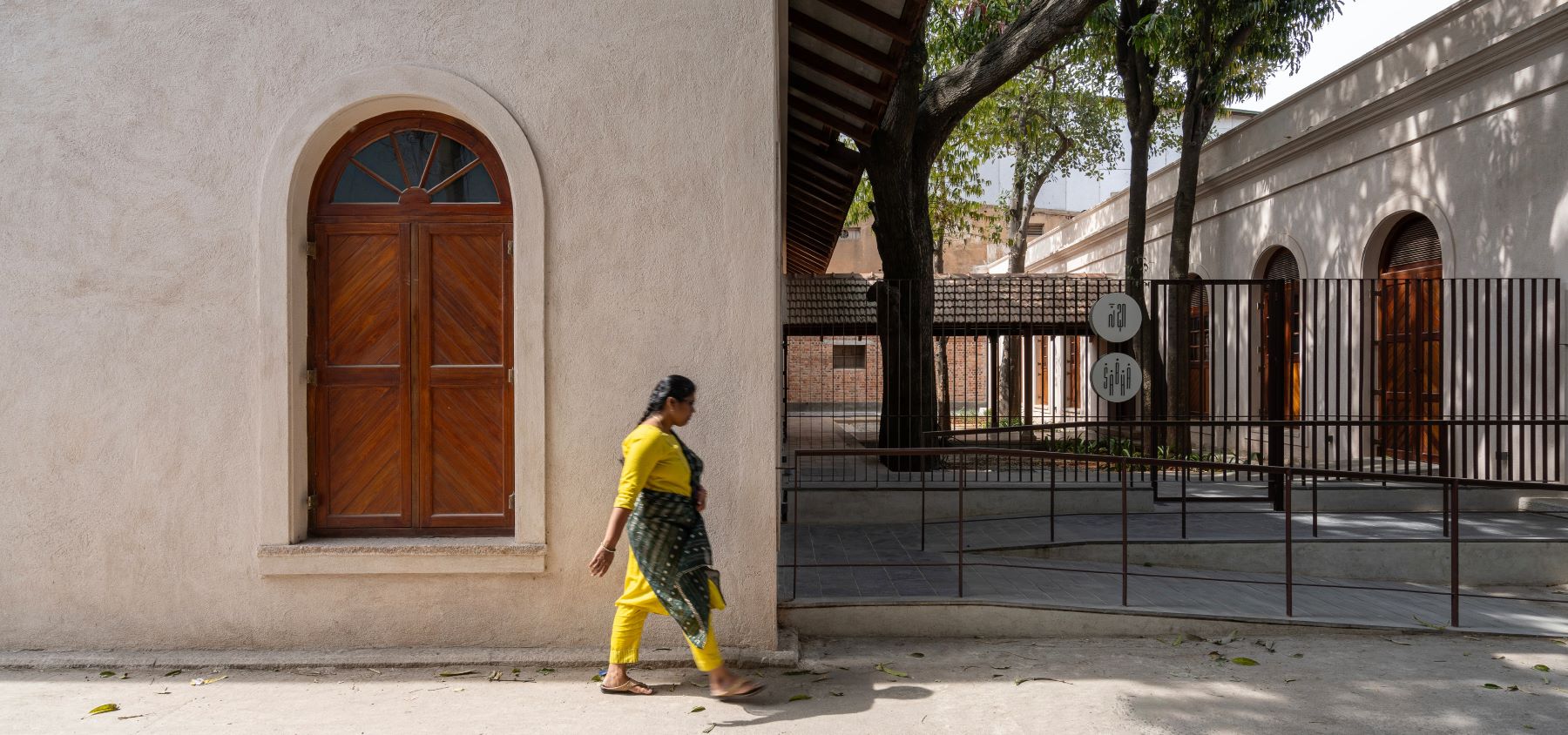Architectural internship is a quintessential part of an architectural education. However, it is increasingly becoming an unmitigated ordeal for many within the community. Affecting both students and practicing architects, the workforce imbalance and issues of ineptitude have created an unfavourable – and often exploitative – situation. Inviting the opinions of architects, educators and students, we strive to start a conversation about what can be done to improve this situation. Below, Prof. Manoj Mathur – formerly, Principal Architect of Mathur & Kapre Associates – shares his opinions about the issue.

Only a very drastic reduction in the number of prospective interns has any hope of arresting the widening demand-supply gap. Of the number of students graduating every year, the percentage of professionals setting up new practices – or even continuing gainful employment in architectural practices – is likely dropping. Hence, we are in an inverse multiplication, where every successful intern has less than a 100% chance of mentoring one in future – whereas we are looking to a capacity of 200% or more, from the professional end.
Perhaps it is time to broaden the scope of internship. If we agree that the objective of an architectural education is not to set up practices only, but also to prepare professionals capable of doing several jobs, then why insist on an internship under a registered architect? How about an internship in a construction firm under a site engineer? Or in a real estate consultancy under an MBA? Or in an NGO building rural water-harvesting ponds under a MSW? Or in a magazine under a sub-editor? Or under a photographer? Or an urban installation artist?
An internship should be treated as a training in maturity. Rather than be viewed as a filler for that which a school cannot teach, internships should be regarded as a space to absorb what cannot be learned without experiencing it in the raw. Sure, it means that training programs will have to be re-written wholesale. However, the good news is that there is no shortage of ideas. We just have to overcome our Council-compliance fears.

Manoj Mathur was one of the Founding Directors at Mathur and Kapre Associates. He is currently a full time professor and Head of Department of Architecture at School of Planning and Architecture, New Delhi.







